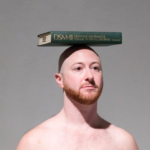




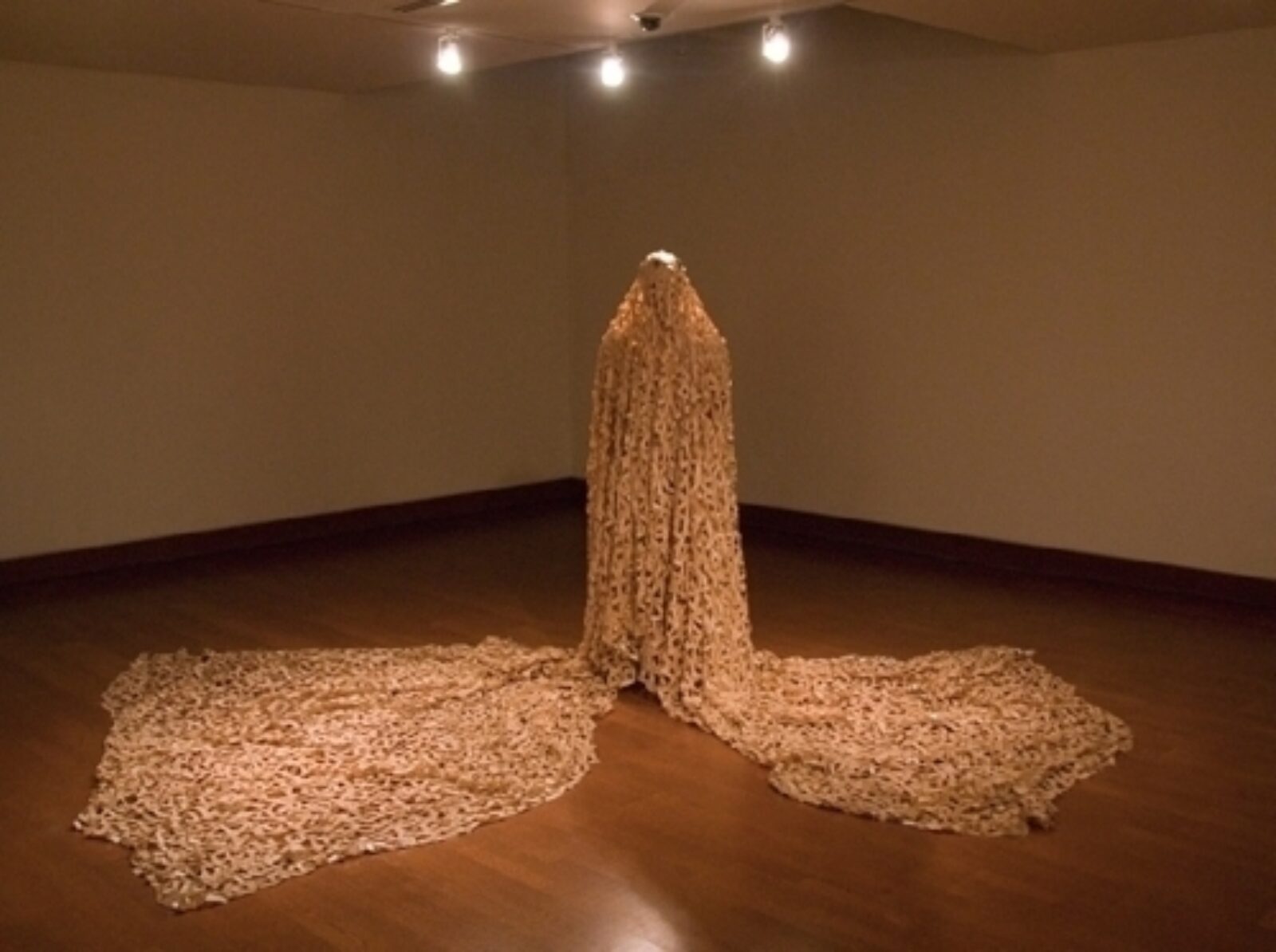




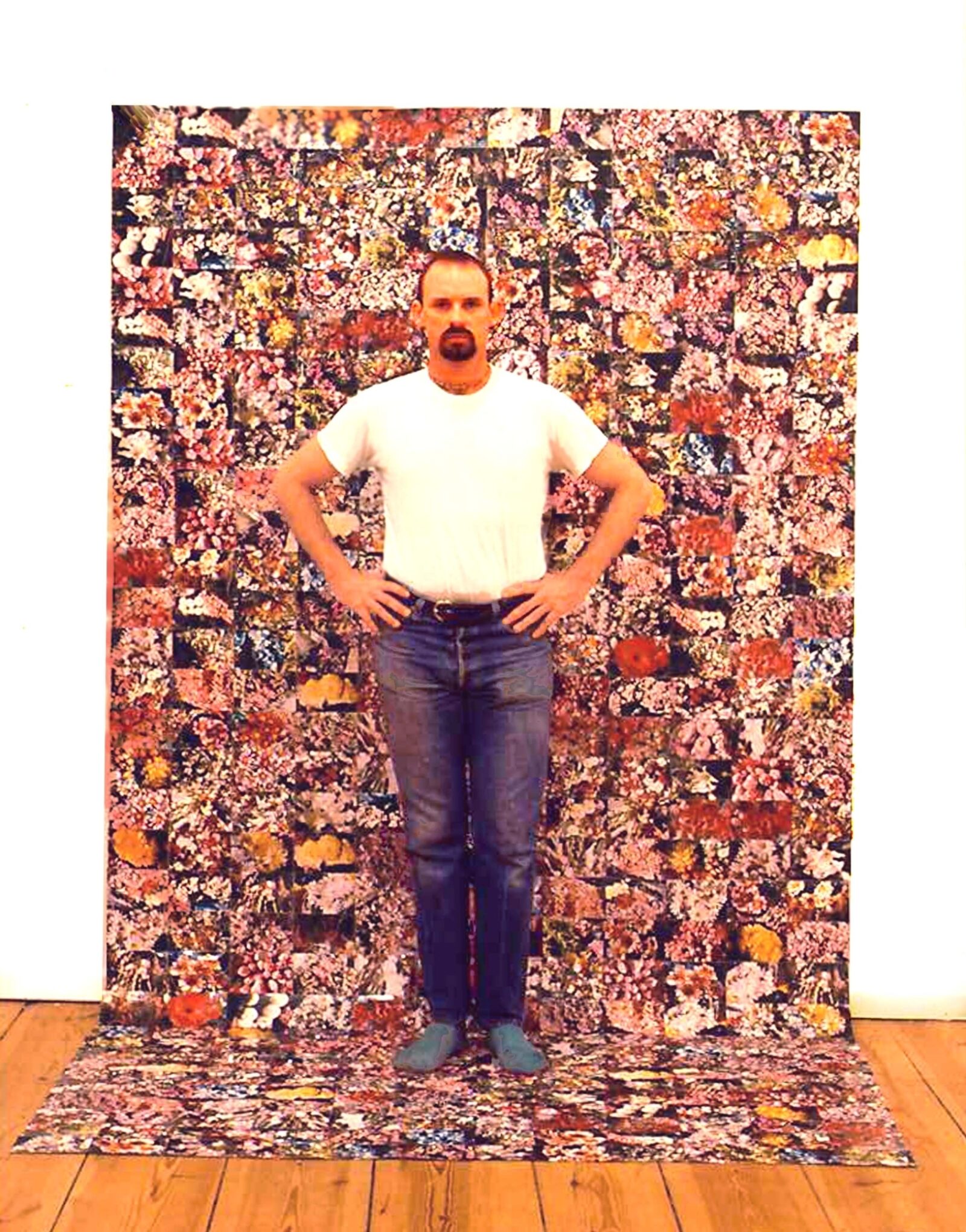













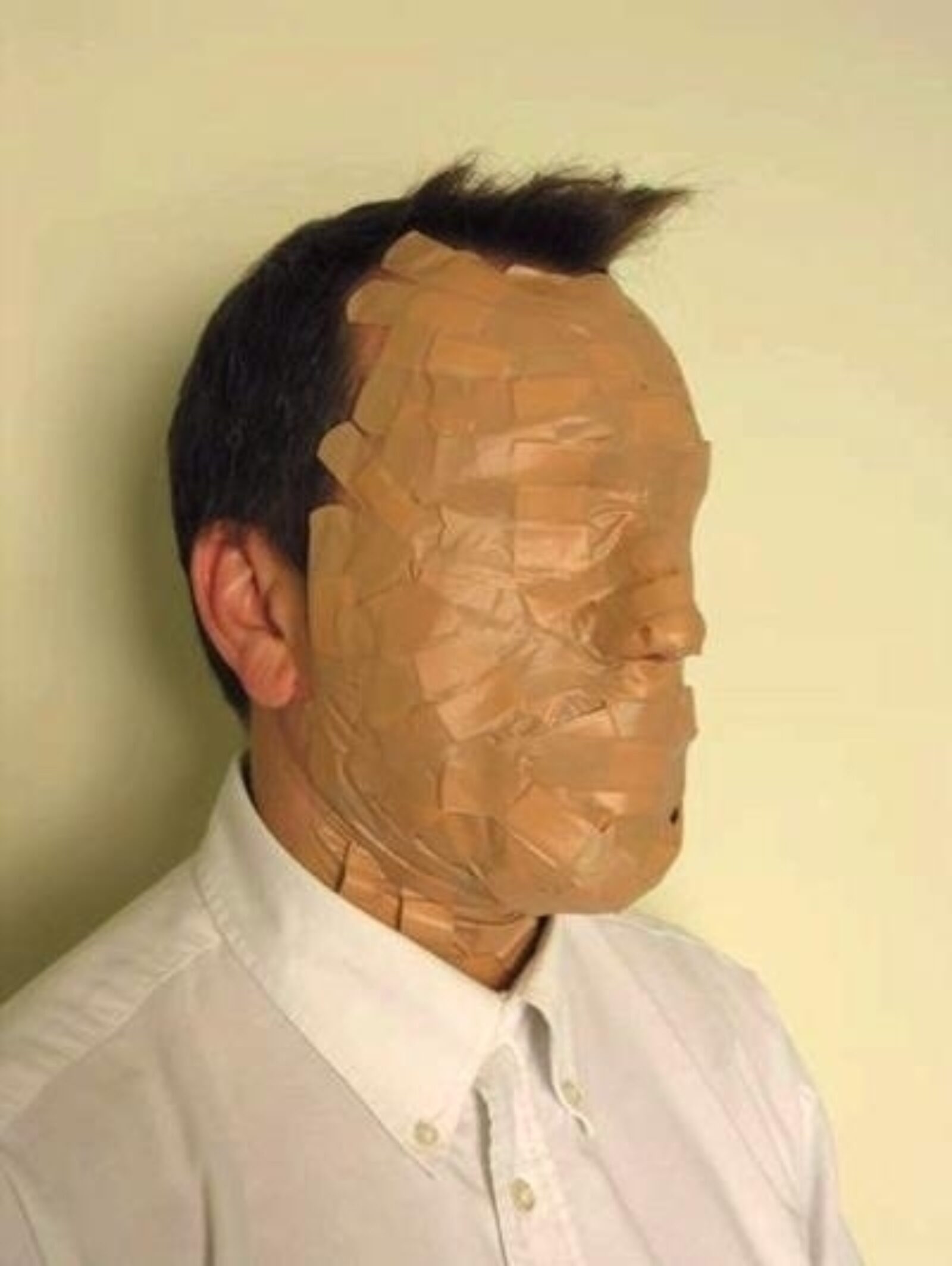









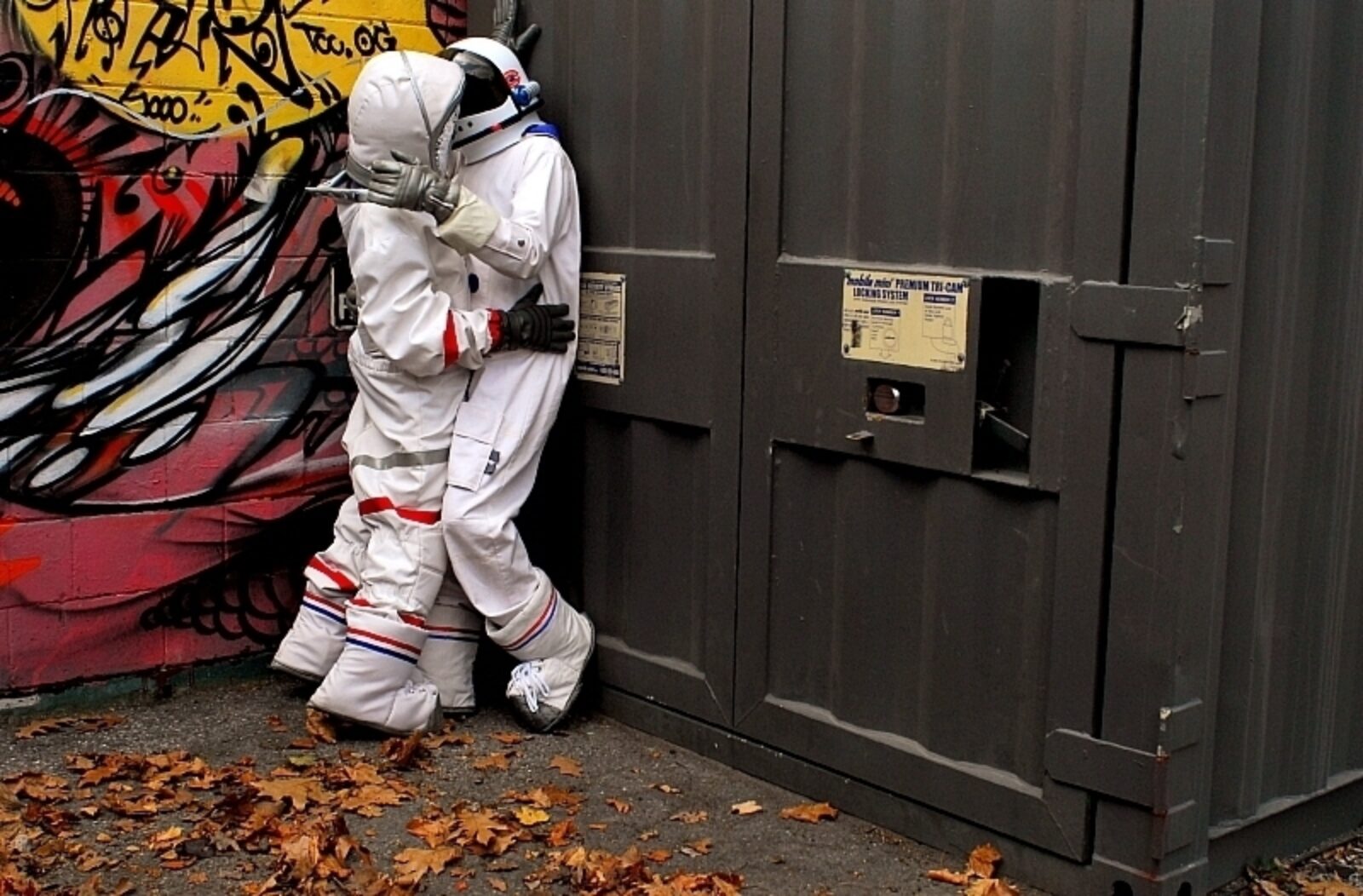
featured gallery for January 2019
Performative Objects
“Performativity has to do with repetition…”- Judith Butler1
“What lessons can we learn from objects? Art objects can tell us many things—about their origins, their intended and received meanings, their makers. But what can objects teach us about how to see?” - Gordon Hall2Performative Objects presents a selection of work culled from the Visual AIDS Artist+ Registry that exhibit a range of repetitive, performative qualities. This curatorial theme combines my interests in queer theory, feminist scholarship, and new materialism with issues I explore in my studio practice as a ceramicist, sculptor, and performance artist. Whether I am working with porcelain or my own body, I rely on repetition and my material choices to help make meaning. Judith Butler’s work on performativity urges us to think of gender as an iterative construction “through language, gesture, and all manner of symbolic social sign.” By turning this lens onto visual art objects, I would like to explore the affective role of the artworks contained in this gallery as well as the cumulative effect of repetition inherent to the cannon of visual art. Through this framing, we can look at and interpret art objects at once on the basis of what they depict, of what they are made, and by what they do for a viewing audience.
It would be easy enough to rely solely on work that uses performance as its referent. Take Kissa Millar’s What do they think lives under my skin? for instance. Balanced between document and documentation, the photograph features the body of the artist in a dramatic scene. The skeletal mask is a memento mori theme that repeats throughout this gallery. Combine the title of this work with the context of enduring social stigma, and the image begins to perform a nuanced cultural critique. Tempting as it may be to rely on the presence of a figure for empathetic connectivity, I’d like to suggest that sculptural objects can perform similarly.
Scott Burton’s Rustic Table appears at first glance to be a functional furniture object made from roughly hewn wood pieces. Cast entirely in bronze, the material composition challenges our initial read and calls into question the object’s function and authenticity. Shroud of Curad by Jerome Caja functions similarly by referencing an object whose authenticity has for centuries been the focus of skepticism, the Shroud of Turin.3 The artist replaces the burial cloth, alleged to have shrouded the body of Jesus, with a contemporary bandage. This linkage between the human experience of suffering and the limitations of the fallible body across millennia comes with a wit and humor central to many of the artworks assembled here. The conveyance of humor as a function of the sculptural material combines with the title text and a legible historic referent. In essence, all of the materials matter. An adhesive bandage carries cultural content that makes meaning and morphs into something unexpected through its transformation into an art object. Whereas Caja uses a single bandage to mimic a famous historic object, Andrew McPhail starts to combine them, first to mimic the red ribbon that the Visual AIDS Artists' Caucus created to raise awareness, then by the thousands in order to fully shroud the body in All My Little Failures.
Alexandar Kargaltsev’s Black on White has a much more contemporary referent - a controversial photo of Caucasian Moscow gallerist, Dasha Zhukova, sitting on a sculptural chair that resembles a woman of color folded in half on her back which was widely criticized as a racist image.4 In response, the media outlet that published the image said, "We see this chair purely in an artistic context. We apologise to all our readers who were offended by these photographs." The problem with viewing the chair as a simply an artistic object is that it ignores the contemporary cultural context and power dynamic set up by positioning Zhukova atop the chair. In his restaging, Kargaltsev transforms the image into a biting cultural critique. In Black on White the body becomes a chair whereas Burton’s Two Part Chair abstracts forms that suggest interlocking bodies. Paired here with Caja’s Bozo Fucks Death, the images perform humor, vulnerability, strength, anxiety, and defiance simultaneously.
Mandy Webb’s Sexy Quilt leads us into a selection of works that position the personal as political. Hunter Reynolds’ iconic Memorial Dress, silk-screened with the names of those we have lost to AIDS, can be activated by performance to become a living memorial. Survival AIDS (Sex and consequences) combines the ACT UP agitprop slogan, “AIDS IS KILLING ARTISTS NOW HOMOPHOBIA IS KILLING ART” in the lower section of the work near a New York Times story “Plan to House Homeless With AIDS Stirs a Protest”5 from 1993. This combination introduces the rapid gentrification of NYC as a cultural consequence of the early epidemic, a theme expertly detailed in Sarah Schulman’s Gentrification of the Mind.6 Schulman’s book provides a historic basis for Ben Cuevas’ Ghosts of the Trucks of the West Side Highway. Ghosts is a portable memorial that combines contemporary elements of sound recordings and a UHaul box truck, with a fragmented archival image of gay truck-sex cruising culture of the 1970’s in New York’s Meatpacking district, an area of the city now totally sanitised and hyper-gentrified.
Cuevas’ Transcending the Material performs a multitude of meanings from spiritual transformation to the medical industrial complex and its relationship to identity formation. Cuevas’ Muscular (Knit Hood Series) hovers between fetish object and face mask, objects that reveal and conceal, reminding me of works by Walt Cessna, Kissa Millar, Frederick Weston, Andrew McPhail, Roberto Ekholm, Jack Waters, and finally Patrick Webb. The triad of Mosquito Man #1 (congress), Medicodonor, and the face of the central character in House of Cards all resemble the billed mask of seventeenth century plague doctors, harkening to earlier public health crisis.7 Webb’s Punchinello character8 Ekholm’s Roberto The Healer, and Caja’s Charles Devouring Himself all repeat themes from the history of art.9 In particular, Caja’s Charles Devouring Himself is a direct quote of Goya’s Saturn Devouring His Son10 which is itself a quote of an earlier Rubens painting of Saturn11. In this one small contemporary work by Caja, we have hundreds of years of reproduction and iteration that ultimately make up the canon of art history. Unlike Goya and Rubens who depict a tragic mythical scene with paint, Caja incorporates the ashes of his close friend Charles Sexton, who died of AIDS related complications, to depict the lived experience of the ongoing AIDS epidemic.
While earlier works in this gallery repeat themes long present in the history of art, Kia LaBejia and Jessica Whitbread use the repetition of characters in serial images that, taken together, animate contemporary narratives. LeBejia’s resolute and determined self-portrait series pulls the viewer into intimate moments of the daily rituals that accompany living with HIV. Her Kia and Mommy complicates that repetition by introducing the character of LaBejia’s mother whom she lost to AIDS. In this instance, the virus is also repeated across consecutive generations. The gesture of laying on the floor is replicated in Mourning Sickness and the linguistic play in the title as well as the figures posture harkens back to Millar’s work. In Whitbread’s Space Date series the artist repeats the costuming within each frame, two full body space suits that obscure the individuals with an exaggerated full body barrier, then recasts the characters throughout the series thereby injecting humor into a relatable interaction. We see the fully encased characters looking at galactic artworks in a gallery setting, engaging in a public kiss, and finally toasting each other while sitting on a bed. What would otherwise seem mundane, the progression of a date, becomes imbued with meaning by the addition of the costume. As with many of the pieces in Performative Objects, Whitbread’s work operates allegorically as a cultural critique while gesturing towards erotic potential.
Whether the artists draw on history or use material choices to make meaning, the very act of repetition is performative and playful. As a tactic taken up by Poz artists, repetition can be understood as an form of resistance, resilience, and a coping mechanism in the face of ongoing challenge. These artworks have the capacity to teach us new ways of seeing, producing a formal aesthetic capable of inspiring joy, play, and revolution.
[1] Kotz, Liz, The Body You Want: An Interview with Judith Butler. Artforum, 1992. Print. https://www.artforum.com/print/previews/199209/the-body-you-want-an-inteview-with-judith-butler-33505.
[2] Gordon Hall (2013) Object Lessons: Thinking Gender Variance through Minimalist Sculpture, Art Journal, 72:4, 46-57, DOI: 10.1080/00043249.2013.10792863
[3] "Shroud of Turin - Wikipedia." https://en.wikipedia.org/wiki/Shroud_of_Turin. Accessed 16 Dec. 2018.
[4] "Russian socialite sparks outrage with 'racist chair' photograph ...." 21 Jan. 2014, https://www.theguardian.com/world/2014/jan/21/russian-socialite-zhukova-racist-chair-naked-black-mannequin.
[5] "Streetscapes/The Northern Dispensary; Plan to House Homeless With ...." 10 Oct. 1993, https://www.nytimes.com/1993/10/10/realestate/streetscapes-northern-dispensary-plan-house-homeless-with-aids-stirs-protest.html.
[6] Schulman, Sarah. The Gentrification of the Mind: Witness to a Lost Imagination. Berkeley: University of California Press, 2012. Print.
[7] Cipolla, Carlo M. (1977). "The Medieval City". In Miskimin, Harry A. A Plague Doctor. Yale University Press. pp. 65–72. ISBN 978-0-300-02081-6.
[8] "Punchinello is Helped to a Chair (Getty Museum) - The Getty." http://www.getty.edu/art/collection/objects/64/giovanni-domenico-tiepolo-punchinello-is-helped-to-a-chair-italian-about-1791/. Accessed 16 Dec. 2018.
[9] "Memento Mori, "To This Favour" | Cleveland Museum of Art." http://www.clevelandart.org/art/1965.235.
[10] "Saturn - The Collection - Museo Nacional del Prado - Museo del Prado." 28 Apr. 2015, https://www.museodelprado.es/en/the-collection/art-work/saturn/18110a75-b0e7-430c-bc73-2a4d55893bd6.
[11] "Saturn devouring a Son - The Collection - Museo Nacional del Prado." 28 Apr. 2015, https://www.museodelprado.es/en/the-collection/art-work/saturn-devouring-a-son/d022fed3-6069-4786-b59f-4399a2d74e50.
